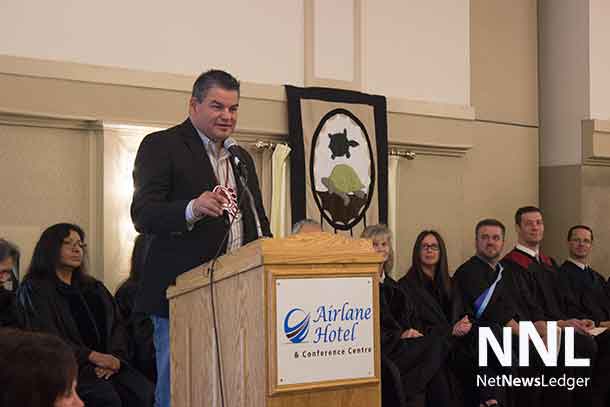
THUNDER BAY – Today the Trudeau government will step forward on a campaign promise to legalize marijuana – its a long awaited piece of legislation that has been fuelled by expectations and scepticism – First Nations are looking at this from the perspective of jurisdiction on Health, Social, Justice and Economy.
Clearly, this is going to become a hotbed of issues that we must examine from many angles – perspectives – and implications that will affect our communities. Like consider youth, consider children, who are in elementary system, who up until now, have been told ‘smoking pot is bad for you and it’s illegal” and with the wave of the legislative wand will now be told “smoked in moderation is healthy recreation and is not illegal if you purchase this federally regulated product in a provincially recognized retail outlet!!!!!” We are headed for some challenges.
As the Assembly of First Nations Health portfolio, my first concern will be health impacts and social implications. As the Ontario Regional Chief, my focus on today’s legislation will be “””what does the federal legislation legalizing marijuana mean from the perspective and from priorities of a legal and jurisdictional lens of First Nations in the Ontario Region?””” Chiefs across the region will have their say on this — we will ensure we coordinate fulsome discussion and targeted dialogue; Chiefs and their FN leadership will set the direction to effectively review and decide on active measures to address this legislation.
Speculation from the Trudeau government on its assumptions will be left to iron some issues out; the excerpt shows that the hype built to push for the legalization may be somewhat different than the reality.
“But pollster David Coletto, of the Ottawa firm Abacus Data, says his research suggests Trudeau’s marijuana policy might not be so obviously potent with youth as is often assumed. A poll Abacus did last year for the Canadian Alliance of Student Associations found that only about 20 per cent of Canadians aged 18 to 24 listed legalizing marijuana as one of their top five policy priorities.
That’s far below the 63 per cent who picked making college and university more accessible and affordable, say, or the 54 per cent who put improving Canada’s health care system in their top five. Still, Coletto says marijuana has potentially more symbolic weight than those numbers suggest. Even if young adults rank affording school and getting decent health care as more vital than legally buying weed, failure to deliver on this marquee promise would, he says, “signify you’re not maybe who you said you were.”
As Chiefs in Ontario have said time and time again, serious policy issues will always need to be examined through the “jurisdictional” lens of First Nations.
Legalization of marijuana will be travelling down that road and won’t have a mellow ride getting it passed First Nations leaders; there is just too much at stake.
Isadore Day
Ontario Regional Chief







